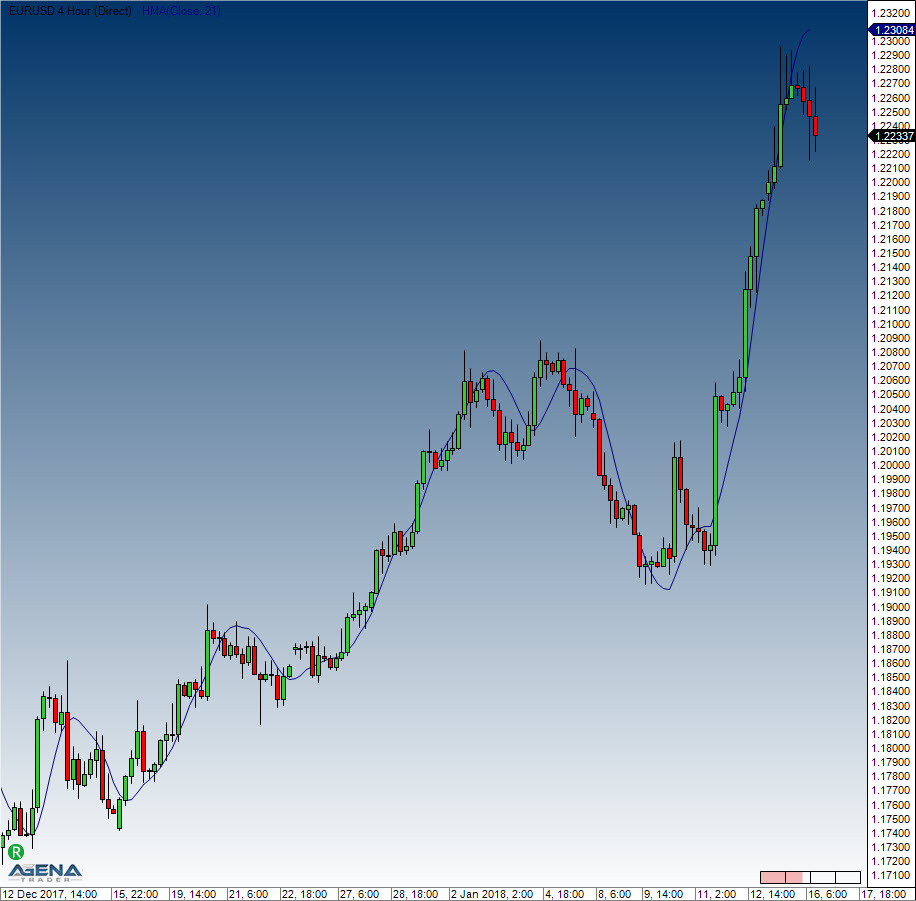HMA - Hull Moving Average
Description
The Hull Moving Average, invented by Alan Hull, is a fast-working moving average that gets rid of almost all delays/lags (zero lag). The calculation is carried out using several weighted moving averages, thereby partially reducing the smoothing effect. Hull’s methodology uses square roots of the period instead of the actual period itself.
Interpretation
The same interpretations as for the moving averages apply to the HMA, the only major distinction being the reduced lag. See Moving Averages.
Usage
HMA(int period)
HMA(IDataSeries InSeries, int period)
HMA(int period)[int barsAgo]
HMA(IDataSeries InSeries, int period)[int barsAgo]Return value
double
When using this method with an index (e.g. HMA(21)[int barsAgo] ), the value of the indicator will be issued for the referenced bar.
Parameters
inSeries Input data series for the indicator
period Number of bars included in the calculations
Visualization

Calculation
Example
Last updated